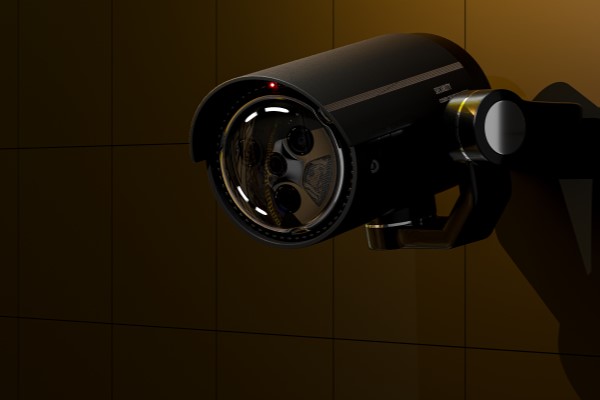Keeping legally secure when installing security solutions
Private or home security installations can lead to a bit of a legal grey area. Phil Tann explains the responsibilities of electricians installing security solutions.
One of the big problems with technology is that it often evolves so quickly that legislation can’t keep up with it. While the privacy laws are pretty clear about businesses and the surveillance they can run on business property, things could be clearer for private residences.
ADVERTISEMENT
Home security is something that almost everyone is thinking about these days, with increased technology around the home, we’re looking for visibility and security for our premises and safety for our families.
A home security camera setup can be as simple as a video doorbell worth $150 through to a multi-camera system, with NVR, offsite footage backup and monitoring worth thousands of dollars. The home owner usually installs the former, but the latter usually requires a professional.
What happens when a professionally installed camera encroaches on someone else’s property or privacy?
This question has taken me down multiple rabbit holes over the past few weeks and sparked conversation, debate and outright argument. Attempting to answer it – regarding current legislation and capacity for action at least – I’ve spent some time on the phone talking to installers and authorities.
It would be an easy situation to find yourself in having completed an installation of cameras, with one or two on the fringe of a property, capturing people passing by on the footpath, potentially recording their private conversation. A reasonable person would work on the theory that what you say and do is potentially public knowledge in a public place. Unfortunately, that’s not always the case in today’s litigious society.
The problem is that the legislation is pretty grey. Different states and territories handle the issue slightly differently. As a starting point, people must know they’re potentially being caught on camera. Without this knowledge, if you’re recording audio (in most states), you’ve potentially committed an offence.
The requirements in each state have a slightly different nuance, which makes it even more difficult to provide a straight answer, so after a lot of emailing and phone calls, here’s what I’ve found: For private property, there doesn’t seem to be any specific authority for any state that is prepared to take ownership of resolving a dispute over security camera positioning on private property.
The privacy laws only cover commercial properties and there aren’t clear guidelines for residentially owned cameras, meaning the council can’t act and the police are unlikely, more importantly, unable to do so.
Centrefit Group chief executive and director Mark Pearce says that while residential installations aren’t their regular clientele, should someone have the budget, he’d undoubtedly engage with them but leave himself some strategic exits to the deal.
Centrefit Group is a commercial system integrator and security installation firm that has extensive experience in the security industry.
Mark adds that the main roadblock to residential installations is the cost. This stems back to home users having a pre-conceived cost in mind for a per-camera cost. This is usually based on DIY home solutions like Ring, Arlo or Swann cameras that install in minutes and connect to WiFi.
“You get what you pay for. We cable all of our cameras for security and reliability,” Mark explains.
“This results in a better-quality system, higher quality footage and longevity of the hardware, but home users don’t necessarily have the budget to spend on that.”
For most residential installations, the user is focused on the visibility of access and egress points to properties, not what the neighbours are up to. For the most part, when residential clients are looking for camera installation, they take advice from their security professional.
Mark says that his team will direct cameras to maximise coverage of the buyer’s property, ensuring the best visibility and surveillance possible within the budget and agreed-upon system installation.
Several steps are also taken to ensure there aren’t any issues in the future. The first is to take photos of all cameras and their relative positioning to the property to ensure that, if they’re moved at a later date, there is a record of their originally installed state.
The second is to take a photo, or screen capture, of the network video recorder (NVR) to show all available cameras and their field of view to the property.
Finally, pulling all of this together is documentation of the photos and screen captures being signed by the property owner to acknowledge their installation and state at handover.
“We would like to think that the public is using the safeguard of security cameras to the original intent. For those that step outside the intent at installation, we safeguard ourselves from future fallback and potential litigation,” Mark says.
To ensure that there was sufficient and appropriate coverage of all states and territories, I spent a lot of time in discussion. This totalled four councils in three states and combined with the recommendation of police in the Northern Territory and ACT, the best option for any disputes is for the complainant to contact options such as Legal Aid, Community Justice, a community advocate, or conflict resolution services in the local area.
This, unfortunately, leaves you, as an installer, with no one-size-fits-all guidance. Still, the consensus from the state and territory authorities I’ve spoken to and the professionals who complete installs is that if you’re following client instructions, ensuring that appropriate signage is up and aren’t recording audio from outside the property, then you’re in a pretty safe space.
By ensuring that these are followed, or you’ve communicated in writing to your client that it is necessary, the likelihood of future fallout from your installation is extremely unlikely and even if someone does pursue litigation, your documentation will likely provide a more than sufficient legal defence.
-
ADVERTISEMENT
-
ADVERTISEMENT


